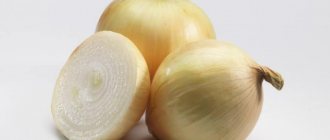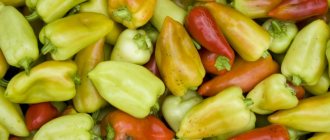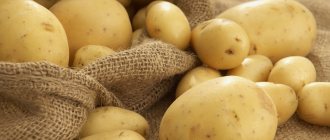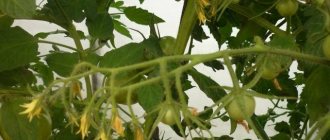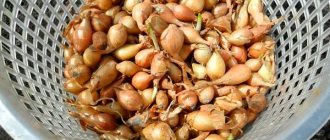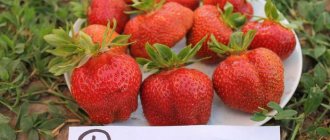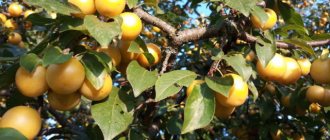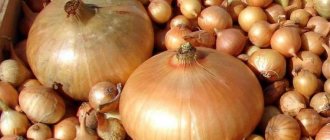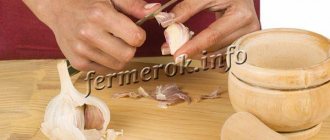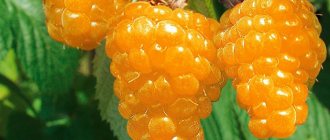Hybrid onions are increasingly taking the place of varietal onions in vegetable gardens and industrial fields, since they have higher quality, good ripening and yield. The shelf life is usually longer too. Cupido F1 bow is distinguished by its high durability, undemandingness and endurance to any conditions, not counting frost.
| Maturation | Type | Color | Life form | Taste |
| Mid-early | Bulb | White | perennial | Mild-sharp |
Description of the variety
Cupid, as you know, in ancient Roman mythology is the god of love, striking people with his magic arrows. In the original language, the name of this deity is Cupido, which is what the Dutch breeders awarded their new onion hybrid.
The distinctive properties of the Cupido F1 bow are:
| Head weight, g | 110–150 |
| Husk color | Light brown, golden |
| Peel structure | Thin, but holds its shape well and does not tend to peel off |
| Onion structure | Dense, elastic |
| Bulb shape | Round, slightly elongated |
| Flesh color | Creamy |
| Average feather length, cm | 30 |
| Root system | Powerful enough |
| Taste | Medium-hot, very good for salads, can be used in baby food |
Did you know? Onion as a vegetable and as the name of the weapon with which Cupid doomed his victims to the torments of love sound the same only in Russian; among the Dutch, like the English, these are different words (in the Dutch language, respectively, “uien” and “boog” ”, and in English - “onion” and “bow”). Thus, there is really no pun or double meaning in the name of the hybrid.
Advantages
- Like all samples of Dutch selection vegetables, Cupido F1 onion has a lot of undeniable advantages, among which it is worth mentioning:
- high quality seed material (no need to carry out pre-sowing preparatory work with seeds);
- ultra-early ripening;
- presentable appearance and dense structure of the bulb;
- very good keeping quality (very rare for early vegetables);
- good transportability;
- high percentage of ripening (93–99%);
- excellent yield indicators;
- excellent taste characteristics;
- unpretentiousness, lack of difficulties in growing;
- drought resistance;
- the possibility of growing both in open ground and in greenhouses;
- suitability for both winter and spring planting;
- universal purpose of fruits;
- lack of tendency to shoot;
- resistance to many diseases, high immunity against pests.
To the advantages listed above, it is worth adding that onion sets of this hybrid are not expensive at all and the price is almost no different from domestic analogues of this vegetable, including those with more modest characteristics.
Did you know? If, after a wasp or bee sting, you immediately rub the stung area with a cut onion, the pain will subside and the swelling will decrease.
Flaws
It is difficult to talk about the shortcomings of the Dutch hybrid. Some sources indicate that Cupido F1 is not sufficiently resistant to cold weather, but this information is not confirmed by gardeners. On the contrary, the hybrid tolerates winter planting well, and in the spring they try to plant it as early as possible, which is quite typical for varieties with a short ripening period. However, when grown in regions north of central European Russia, this hybrid really needs protection from the cold. Sometimes you can find mention that sudden changes in spring temperatures are detrimental to the plant.
Covering onions with film at the initial stages of growth When assessing the productivity of Cupido F1, it is fair to mention that, like all heterotic hybrids, this onion exhibits the above advantages exclusively in the first generation, so it will not be possible to independently prepare planting material from the collected seeds of this onion - such plants lose the qualities of the parent form.
Hybrids are always more productive than varietal forms, they grow better, ripen faster, are less dependent on natural conditions, and have higher immunity, but all these qualities are lost already in the second generation, gradually returning to the original parental material. For industrial production, this feature can be considered a disadvantage, since the farmer will have to bear the costs of purchasing seeds or sowing every year.
Important! The “F1” icon next to the variety name means the first generation of a heterotic hybrid - a plant that is in many ways superior to the varieties from which it was obtained. For example, an onion hybrid can be obtained by crossing the queen cells of two plants - one grown from sets and the second obtained from seeds.
Diseases and pests
One of the features of this variety is its resistance to disease . Among pests, onion flies pose the greatest danger. To protect against pests you can plant:
- carrot;
- calendula;
- marigold.
Beds needed:
- mulch with peat;
- sprinkle plants and soil with wood ash or tobacco.
In cases where pests have attacked onions, insecticides must be used.
Almost all summer residents and gardeners grow onions on their plots. This is a tasty and healthy plant. We invite you to learn about the popular varieties of such species - batun, winter, leek, family, fragrant, red, white. multi-bud, multi-tiered and chives.
Characteristics and productivity of onions
Of the entire line of onion varieties and hybrids bred in the Netherlands, Cupido F1 is the earliest. From the moment of emergence of seedlings to the complete formation of the head, an average of 75 to 82 days passes. The yield of the hybrid is quite high: from 1 square meter of area you can harvest 4 or more kilograms of onions. Optimally suitable for cultivation in the central zone of the European part of the Russian Federation, as well as in more southern regions. Widely cultivated throughout Ukraine.
Valued for its unpretentiousness, high vitality and rapid adaptability to different climatic conditions. Cupido F1 can be used in all culinary directions where onions may be present. Thanks to its soft and unobtrusive spiciness, it is very convenient to put in salads, add to soups, main courses, snacks and preparations.
Preparing the beds and soil
The hybrid is thermophilic, so you need to choose a site for planting it that is sunny but protected from the wind.
The soil should be loose, fertile and neutral acidity.
The main stages of preparing a bed for sowing vegetables include digging up and fertilizing the soil, clearing it of weeds. It is necessary to feed the soil with organic fertilizers .
Selection of planting material
Onion set manufacturer Cupido F1 carefully selects and tests its products before sending them to the market. In the original 0.5 kg package, such onions always have the same head sizes - from 1.0 to 1.5 cm.
Important! The specified range in the size of the sets was not chosen by chance: sets larger than 15 mm in diameter tend to bolt, and if the bulbs are too small, the planting process becomes very labor-intensive and inconvenient.
Proof of the high quality of planting material is:
- absolute dryness (the husks should rustle characteristically when the sets come into contact with each other or between the fingers);
- density;
- golden straw color;
- characteristic elongated shape with a thin “nose”;
- absence of any signs of rot, fungi (mold) or other damage;
- pleasant onion smell (not musty).
Please note that if you purchase seeds of cupid sets at specialized points, then the inspection may not be carried out, since the certified product must be checked in the seed production workshop. In addition, when choosing planting material, you should pay attention to the packaging date. Typically, the sale of Cupido for spring planting begins in February, and such a product (sets or nigella) has excellent germination. But sometimes, sellers try to sell deposits of products from previous years, in which case the planting results may be somewhat worse.
Features of growing agricultural crops
Onion sets Cupido, the description of the variety indicates that it is not suitable for planting in open ground. It can be germinated either under agrofibre or in greenhouse conditions. To harvest a good harvest, the seeds must be prepared. You can check whether they are empty or not in a saline solution. Those seeds that cannot bear fruit will remain on the surface of the solution. Those seeds that have sunk in it should be collected; it is recommended to soak them in a weak solution of potassium permanganate. This will protect the seeds from various diseases. Growth stimulants can also be used. Next, the seeds should dry in a warm place. Poorly dried seeds can become covered with fungal diseases. However, if varietal seeds are of a high class and are purchased at specialized retail outlets, you can skip the disinfection process, since they are processed at manufacturing plants. The packaging with purchased seeds must indicate a certificate from the manufacturer. There are several ways to sprout this type of onion:
- In flat containers;
- In peat cups;
- In snails.
A more common method is the method of growing in flat containers. Germinating seeds in peat cups is also not bad, but more expensive. Already treated seeds should be planted in the container. Land for seedlings can be purchased in stores that sell various agricultural crops. It is recommended to maintain the temperature in the room in which containers with seeds will remain. It is advisable that the temperature does not fall below 18 degrees. At lower temperatures, the percentage of onion germination decreases. The first shoots appear after 6 days. If the sowing was done densely, the emerging sprouts require transplanting.
Cupido onion sets for planting
Sprouted sprouts should be hardened off before planting in open ground. To do this, for some time, which must be increased every day, the room with the seeds is ventilated or the containers are taken out into the open sky or onto the balcony. This is done so that during sudden temperature fluctuations in the soil this type of onion does not die.
It is important to fertilize the soil that will be used for planting Cupido f1 onions and clear it of weeds. For a better harvest, carrots can grow next to the onions. The operation of planting sprouts in open ground can only be carried out at positive temperatures. Otherwise there will be no harvest. The distance between the sprouts should be about 10 cm so that the developing fruits do not interfere with each other. The bulbs are planted to a depth of no more than 5 cm.
Note! Onions do not require abundant watering, so they should receive moisture as the soil dries out. This usually happens three to four times a month. Otherwise, the fruits will become watery, the process of rotting may begin, and accordingly, the yield will no longer be so high. It is recommended to treat seedlings against pests.
Varietal sets can be planted in spring or in the first ten days of November. The diameter of the bulbs intended for planting should not exceed 2.5 cm. The set should be strong in appearance, with golden shiny skin, without damage. Soil preparation involves digging and fertilizing. Organic fertilizers can be used. Fertilizers such as ash, potassium salt or phosphates are also good. You can also mix the soil with hay or dry grass. This will create some insulation for the onion set. The variety is unpretentious to soil, but low-acid, loose soil is most suitable. Clay soil will not allow the fruits to gain weight. It’s good if squash or cucumbers grew in this area in front of the onions. The distance between the onion rows should be at least 15 cm. Also, the site should be located in a sunny place, protected from drafts. When planting onions at the end of autumn, the sets gain moisture and subsequently the fruits acquire a slightly sweet taste.
Slightly sweet taste
This agricultural crop does not require careful care. It will be enough to loosen the soil, remove weeds and water. This is done to ensure that the vegetable receives enough oxygen, fertilizer, minerals and nutrients. This will also help it form and grow faster. Substances that are not desirable for feeding this agricultural crop are:
These fertilizers will not bring any beneficial substances to the vegetable. Moreover, cupido may begin to dry out, since the variety does not accept this type of fertilizer. Pest control should be carried out on time. The variety is often attacked by the onion fly. In order to protect the crop from this pest, calendula or various low-growing marigolds are planted around the perimeter.
The harvested crop must be well ventilated and the fruits allowed to dry. Dry parts of the bulbs should be removed. Cupido can be stored in wooden or plastic containers with holes for ventilation. The optimal storage temperature is 15 degrees. A cellar or pantry works well.
If you follow these recommendations, you can harvest a rich harvest of Cupido onions.
Growing conditions
Like any onion, Cupido F1 is a biennial plant: during the first year, a set is grown from the seeds, and from it, the next year, a turnip grows. The hybrid can be grown both in open ground and in greenhouses. The culture is unpretentious in care and resistant to pests. Cupido F1 is equally well suited for industrial production and for growing in a small summer cottage for personal consumption. You can plant onions of this variety in the fall, in which case the harvest can be obtained even earlier.
Did you know? Judging by official statistics, Libyans are the biggest fans of onions. Every year, every resident of this country eats more than 33 kg of turnips (for comparison, the French, who invented the famous onion soup, are content with a “pathetic” 5.5 kg of this healthy vegetable per year).
Winter planting should be done in such a way that before the onset of frost the plant forms a root system, but at the same time does not release the feather, otherwise the onion will freeze. The optimal time for work, depending on the region, is from the end of October to the second half of November (about 3 weeks before the onset of frost). Deeper planting - up to 10 cm - helps prevent germination and freezing in winter.
In addition, the top of the bed needs to be covered with a dense layer of mulch - straw, peat or other organic matter. Despite the hybrid's lack of tendency to bolt, this problem can arise if the plant freezes or is exposed to sudden temperature changes, so spring planting should be done when the soil has completely warmed up.
Otherwise, the conditions for growing Cupido F1 are standard:
| Optimal temperature, °C | +12…+16 |
| Seed germination temperature, °C | +4…+5 |
| Frost resistance of a mature bulb, °C | -6…-7 |
| Lighting requirements | photophilous |
| Soil fertility requirements | High |
| Watering requirements | Drought-resistant, requires watering in the first and second third of the growing season, does not tolerate stagnant water |
Advantages and disadvantages
Pros:
- excellent productivity;
- excellent taste without unnecessary sharpness and bitterness;
- possibility of long-term storage;
- excellent presentation;
- high transportability;
- rapid ripening;
- ease of care;
- immunity to common diseases and good resistance to pests;
- when purchasing seeds, there is no need to process them before sowing;
- the ripening rate of turnips reaches 99% without ripening;
- drought resistance;
- possibility of winter cultivation;
- universal use;
- the hybrid is not prone to bolting;
- Suitable for planting in greenhouses and open ground.
Minuses:
- may die in severe frosts;
- does not tolerate temperature changes well;
- It is impossible to harvest seeds from your own harvest.
Growing from seeds to seedlings at home
There are three ways to grow onions:
- through seedlings from seeds;
- through sowing seeds in open ground;
- sevcom
Let's take a closer look at the first option.
Important! Before packaging seeds, Dutch producers carefully check them for germination and carry out all pre-sowing preparatory work. When trying to “improve” professionally treated seeds, an inexperienced gardener can only significantly reduce their viability.
Preparing seeds for planting
Traditionally, the seeds of any vegetables must be prepared before planting. These activities may include all or some of the following steps:
- germination test;
- soaking;
- disinfection;
- germination;
- growth stimulation;
- bubbling;
- panning.
However, in relation to branded seeds of the Cupido F1 hybrid, you do not need to do any of this. Seeds from Holland need to be planted dry.
Seed planting process
You can grow onion seedlings in several types of containers:
- in single-serve cups;
- in boxes or containers with low sides;
- in special cassettes for seedlings;
- in the so-called “snails” - special home-made structures made from a pot and a spiral of tape made of transparent and waterproof material inserted into it, on which a layer of soil and seeds of future seedlings are previously laid out.
Since onion seeds are very small, planting them in separate cups is inconvenient and irrational, but it’s worth paying special attention to the “snail” as one of the most convenient life hacks in terms of using free space and future replanting.
Video: planting onion seeds using the “snail” method
If seedlings are planted in a container (the most common method), it is done like this:
- The container is filled approximately 2/3 with nutrient soil mixture.
- The soil is watered abundantly with warm water.
- When the water is absorbed and dries a little, shallow grooves (up to 1.5 cm) are made in the container using a wooden sushi stick or other similar tool with a distance between rows of about 5 cm.
- Onion seeds are laid along the entire length of the grooves.
- Sprinkle the furrows with soil and do not water them anymore.
- The container is covered with film and placed in a warm (+20...+22 ° C) place until shoots appear.
- When the onion sprouts, the film is removed.
Video: sowing onions for seedlings
Seedling care
Caring for seedlings consists mainly of monitoring soil moisture, and the seedlings should not be watered too actively - just enough so that the soil simply does not dry out. Watering is best done with a spray bottle so as not to bury the seedlings and damage the delicate roots. After each watering, the soil can be slightly loosened, but this should be done extremely carefully, affecting only the top layer of soil.
Onions do not need any fertilizers at the stage of growing seedlings; they can burn the roots and destroy the plant. Before planting seedlings in open ground, it is important to harden them. To do this, 7–10 days before, containers begin to be taken out into the open air, gradually increasing the time of such “walks.” By the time of transplantation, seedlings should have “experience” of being in the cold for 24 hours.
Did you know? The plant symbol of Wales is the leek, and its colors - white and green - have been used by the archers of this principality since the 14th century. According to legend, a long time ago, during a battle with the Saxons on an onion field, the Welsh, on the orders of David of Meneve (patron of Wales), decorated their helmets with leek petals, being able to easily distinguish their own from foes and thereby winning.
Transplanting seedlings into the ground
Planting seedlings in open ground is carried out after the onset of stable heat, so that return frosts do not destroy young plants. In the southern regions, for example, in Ukraine, this can be done in early May (although, of course, you should focus on weather conditions), but residents of the middle zone should wait another 2-3 weeks.
Before planting seedlings, the selected bed must be cleared of weeds, other organic residues and debris, dug up, loosened and fertilized
To do this, you can use compost, humus or “Kurnik” (granulated chicken manure), as well as mineral fertilizers, for example, per 1 sq.m.:
- humus - 2–3 kg;
- potassium salt - 15 g;
- ammonium nitrate - 10–12 g;
- superphosphate - 20–30 g.
Important! Fresh manure should not be added to the ground before planting onions. This fertilizer contains an abundance of weed seeds, the proximity of which the crop does not tolerate.
Then the beds are marked. The recommended planting scheme for Cupido F1 is 20 x 10 cm. According to the planned scheme, you should dig holes up to 5–6 cm deep, pour about 0.5 liters of slightly heated water into the bottom of each (you can add a drug to stimulate growth, for example, "Epin" or "Kornevin") and be sure to wait until the water is absorbed.
A plant carefully removed from the container or “snail” along with a lump of earth is placed in each hole, the required amount of earth is added on all sides, thoroughly compacted so that there are no air chambers left inside, and, if desired, mulched.
Video: planting soil seedlings in open ground
Description of the hybrid
Cupido F1 is a heterotic (with accelerated growth and increased vitality) hybrid of the first generation.
Its bulbs are used universally: they are consumed fresh, added to salads and preparations, used for boiling, stewing and frying.
Origin and development
Hybrid onion Cupido F1 was bred by Dutch breeders, the originator is NICKERSON ZWAAN BV.
The hybrid was included in the State Register of Russia in 2015.
Chemical composition, trace elements, vitamins and beneficial properties
Cupido contains:
- essential oil;
- proteins;
- carbohydrates;
- Sahara;
- mineral salts;
- vitamins B, C, PP;
- macro- and microelements.
Onions stimulate the immune system and metabolism, protect the body from viruses, have an antibacterial effect, act as a source of essential vitamins and minerals, and help remove toxins from the body.
Ripening time and yield
This is a mid-early ripening onion - the harvest is harvested 75-85 days after emergence.
Marketable yield is 266-355 c/ha.
Reference. The maximum yield was recorded in the Moscow region - 604 c/ha.
Disease resistance
With proper care of plantings, Cupido is not prone to disease. Among the pests, onion flies pose the greatest danger to this onion.
Characteristics of the bulb, description of appearance, taste
The hybrid forms dense two-bud bulbs with a neck of medium thickness, which have a round shape and weigh 90-120 g.
The heads are covered with a brownish-yellow husk, the flesh is white, with a greenish tint. The taste is soft, semi-sharp.
For which regions is it best suited and what are the climate requirements?
The hybrid is included in the State Register for the Central, Central Black Earth, Lower Volga and Far Eastern regions.
Reference. When cultivated in areas located north of central European Russia, onions need protection from frost.
Rules for growing from seedlings in open ground
Another way to cultivate the Cupido F1 hybrid is to grow sets. In this case, the seed is planted directly into open ground and gives almost one hundred percent germination.
Important! The ideal soil for Cupido F1 is sandstone or loam.
Site selection and soil preparation
The Dutch hybrid can grow in any type of soil. The only important thing for the crop is that the soil is nutritious and fertile (high humus content), and also has a neutral or slightly alkaline reaction (pH level in the range of 6.6–7.4). It is better that the soil is sufficiently loose and has good moisture permeability. The bed is prepared for planting seedlings in the same way as for seedlings.
The place for the garden bed must be open and well lit, but have reliable protection from strong gusts of wind. Counting on a good onion harvest, when choosing a place to plant it, be sure to take into account the standard rules of crop rotation, since some plants are bad predecessors for this crop, while others, on the contrary, contribute to its intensive development.
| Good predecessors for onions | Bad predecessors for onions |
| green manure | parsley |
| potato | dill |
| tomatoes | Sweet pepper |
| chilli | parsnip |
| eggplant | celery |
| zucchini; | broccoli |
| cucumbers | peas |
| salad | beans |
| cabbage (white cabbage, kohlrabi) | radish |
| spinach | turnip |
| radish |
Preparing seedlings for planting
Since, as already mentioned, the Dutch manufacturer, taking care of its reputation, carefully calibrates the seedlings before sale, the gardener no longer needs to carry out this work. Further preparation of seedlings for planting usually includes the following steps:
- drying;
- warming up (the seeds are kept for 7–15 days in a very warm place, with a temperature of +30…+35°C);
- disinfection;
- treatment with growth stimulants.
Did you know? According to official sources that have survived to this day, the slaves who built the Cheops pyramid were generously fed with onions, garlic and radishes. The great love of the ancient Egyptians for onions can also be judged by the fact that an image of this vegetable was discovered on the famous tomb of Tutankhamun.
A high-quality onion set Cupido F1, purchased in a specialized store, does not need to carry out such events; moreover, they are strictly contraindicated for it. If the gardener has doubts about how the product was stored before purchase, you can warm it up a little before planting, but nothing more.
The process of planting seedlings in the ground
The scheme for planting seedlings in open ground fully corresponds to planting seedlings (20x10 cm). Each bulb must be buried 3–5 cm into the ground. When covering the seedlings with soil, the spouts should be left on the surface.
Video: planting onion sets in open ground
Watering and fertilizing
One of the distinctive features of the Cupido F1 hybrid is its ability to develop a powerful root system capable of retaining moisture and thus not being afraid of drought. On the other hand, the crop, like all root and bulbous crops, reacts very poorly to stagnation of water in the soil. Therefore, you need to water the garden bed infrequently, as the top layer of soil dries out.
In moderately dry summer conditions, such procedures can be carried out once every 2–3 weeks. Approximately 3-4 weeks before harvesting, watering should be stopped completely, in this case the taste characteristics of the onions will be much better, and their shelf life will increase.
As for fertilizing, an early-ripening crop needs it only if the soil in the garden bed is depleted (with proper agricultural practices, the fertilizers applied before planting will be enough for the hybrid to last 3–3.5 months of the growing season). Before applying fertilizers, the bed must be watered.
During the growing season, you can carry out up to two feedings of Cupido F1 according to the following scheme:
| Application time | Type of fertilizer and dosage per 1 sq.m. |
| Third ten days of May | ammonium nitrate - 10–15 g |
| Second decade of June | potassium salt - 10–15 g |
Important! Nitrogen fertilizers are applied to the onion bed if the crop is grown for feathers; if you want to get a turnip, they are not needed.
Loosening the soil and weeding
Without regular and thorough removal of weeds, it is impossible to grow a good harvest of onions. The easiest way to combat weeds is by loosening, which, in addition, will ensure the preservation of moisture and normal air exchange in the soil. For loosening, it is recommended to use a special tool - a hand claw, the teeth of which must be well cleaned and disinfected before starting work.
However, for the work to be effective, it must be done constantly, at least once a week, preventing emerging weeds from forming an extensive root system. The optimal loosening depth should be from 4 to 6 cm. Mulching the soil can help save yourself from the need for constant loosening and weeding.
Important! During the loosening process, you should not allow the spouts of the sets to be covered with soil, since in this case the onion will stop growing.
Prevention of pests and diseases
As was said, Cupido F1 has excellent immunity, and, subject to the rules of agricultural technology (primarily this concerns the watering and fertilizing regime), it is practically not affected by fungal and other diseases. Most pests are not afraid of the crop, except, perhaps, the onion fly, or, to be more precise, its voracious larvae.
The onion fly is an insect similar to an ordinary housefly that lays larvae directly on the set sticking out of the ground, hiding them between the scales. During the season, the crop can be attacked by 2–3 generations of this pest.
You can fight the parasite with the help of potent insecticides, such as “Mukhoed”, “Aktara”, “Alatar” or “Sochva”. However, such means are not very suitable for gardeners who care about the environmental friendliness of the vegetables they grow. It is much wiser to take care of the safety of the garden bed in advance.
You will be interested in learning how to control onion pests.
A good effect is obtained by mulching the beds with peat, as well as “powdering” the soil along with the spouts of wood ash sticking out of it, perhaps mixed with shag or tobacco, or laying out crushed wormwood and hot pepper around the plantings.
In order to scare away flies, you can plant onions next to carrots; the insect simply cannot stand its smell. Calendula, marigolds and other aromatic plants can perform the same function.
Basic rules of care
- Watering .
Cupid onions grow well in moderately moist soil. It tolerates drought better than overwatering. In moderately dry summers it is necessary to water 2 times a week. Water the onions when the top layer of soil dries. 3-4 weeks before harvesting, onions should not be watered. This will improve its taste and increase its shelf life. - Feeding . 2 weeks after planting, you can fertilize with nitrogen, phosphorus or organic fertilizers. Over the entire season, onions can be fed 3-4 times.
- Thermal and light conditions . Cupid onion is warm and light-loving. Grows well at temperatures from +10 to +25 degrees.
- Do I need to trim it ? The answer to this question is controversial. Each gardener decides whether to trim onions or not. You can definitely answer that cutting off the top of the bulb will not harm it. When planting on farms, the sets are not cut off, since processing tens of kilograms of onions is a labor-intensive task.
Harvest and storage
Cupido F1 is a long-lasting onion, however, in order for stocks to last until the end of winter and not lose their quality, the crop must be properly harvested and prepared. Therefore, there are a number of important rules:
- As soon as the tips of the feathers begin to dry out (usually this happens already in mid-July), the bush must be opened slightly and gently pulled up, tearing some of the roots. This contributes to better ripening of the turnips.
- Harvesting begins after the feather dries and lies on the ground. For Cupido, this period begins towards the end of July or beginning of August. You should not wait for the above-ground part to dry out completely; you can start harvesting until about a third of the tops are on the ground.
- You need to remove the turnip from the ground using a shovel or a special bracket, but under no circumstances try to pull it out with your hands.
- Digging is carried out gradually, first removing every second plant from the row, then removing turnips after one, etc. The final collection is carried out when the entire above-ground part is completely dry.
- After removing the onion from the ground, it should be left in a dry and ventilated place for 5–7 days to dry completely. If the days are dry, you can leave the crop directly in the garden.
- After drying, the dry top must be kneaded and separated from the turnip. Those specimens whose neck remains thick are not suitable for long-term storage, so they should be selected for immediate consumption.
- Next comes repeated drying. It lasts another week, but is carried out at a higher temperature - no less than +30...+35° C. To prevent the onion from “suffocating”, the room must be well ventilated.
- Onions prepared in this way can be stored for long-term storage in a basement, cellar, or attic (optimal temperature conditions are +5...+7 °C). It is best to place vegetables in baskets or wooden boxes in a low layer; you can “braid the turnips” and store them hanging.
More recently, having appeared on the Russian and Ukrainian markets, the Dutch onion set Cupido F1 has already gained popularity among many gardeners, and it is equally highly valued by professional farmers and owners of personal plots.
The plant adapts perfectly to different climatic conditions, does not require much attention, is almost not affected by diseases and pests, can be grown in almost any possible way, and produces a consistently rich harvest with excellent shelf life. To top it all off, even the most picky gourmet can appreciate the taste characteristics of this onion.
Caring for Cupid's onions
Cupido onion is distinguished by its rapid growth rate and unpretentiousness. It grows well in open areas with direct sun access. The bulbs produce powerful roots that penetrate deep into the soil, making the plant resistant to drought. Planting care is minimal:
- Water only after the surface layer of soil has dried. A month before harvest, they stop giving water.
- If the soil is fertile or fertilizers were applied when preparing the site, additional fertilizing is not necessary.
- Weeding needs to be done regularly. To curb the growth of weeds, it is recommended to use sawdust, grass clippings and other mulch.
- Loosening is carried out periodically, after heavy rains or watering.
The harvest is harvested from late July to mid-August. As soon as a third of the tops have fallen, you can dig up the bulbs (you should not wait for complete lodging). Turnips are dug out with a shovel or a special bracket. But you should not take them with your hands. The bulbs are shaken off the ground, allowed to dry and dried for a week at a temperature of 30–35 degrees. Then they are sent for storage in a dry and cool place (5–7 degrees Celsius).
